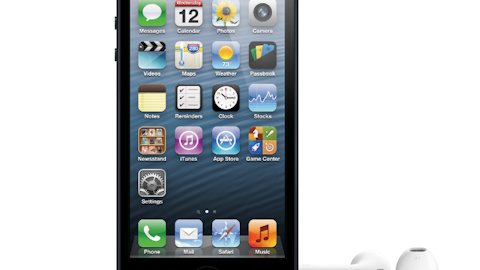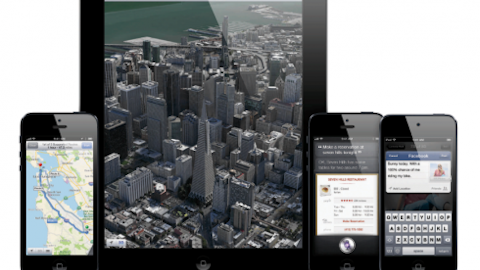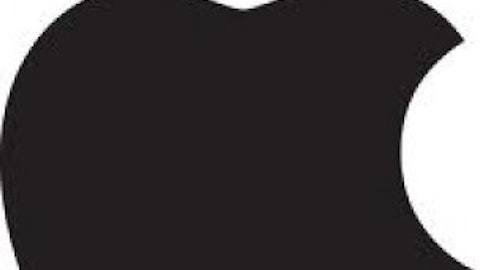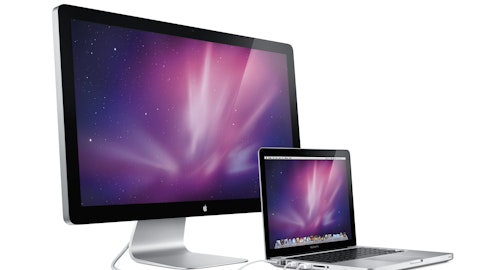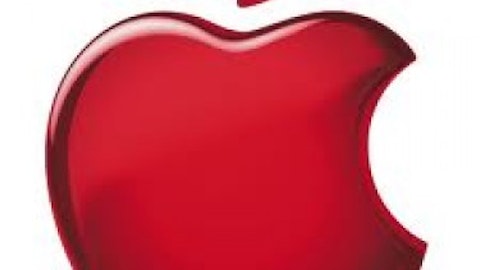The story is similar for Nokia. While Nokia once had the smartphone lead, its Symbian OS was no match for iOS, which eventually led to the company’s transition to the Windows Phone platform. Nokia recently reported strong sales of its “Lumia” line of smartphones. But while Lumia sales quadrupled year-over-year to 4.4 million units in Q4, the iPhone sold more than ten times as many units. Clearly, Nokia is not even close to regaining a meaningful share of the high-end smartphone market.
Nokia’s recent deal to offer a subsidized phone through China Mobile Ltd. (NYSE:CHL), China’s largest wireless carrier, is a big win for Nokia and an incremental negative for Apple. However, consumer demand for the iPhone will probably force China Mobile to come to an agreement with Apple Inc. (NASDAQ:AAPL) in the next year; otherwise it will continue losing 3G market share to its smaller rivals. While the Lumia may be successful, there are still plenty of China Mobile subscribers who will want an iPhone.
Samsung is clearly the biggest threat. The company recently announced that it had sold more than 100 million units of its high-end Galaxy S smartphone line since its launch in May, 2010. That said, Apple sold more than twice as many iPhones over the same period of time. Samsung offers a broad range of smartphones, unlike Apple, which have allowed it to take a leading share of the worldwide market. However, Apple Inc. (NASDAQ:AAPL) has long shown that it does not need to maintain a #1 market share position to earn more than 50% of the smartphone market’s profits.
Moreover, Apple is gaining market share in the highly profitable U.S., where it now has 35% share of total smartphone subscribers. More than 53% of smartphones sold from September to November in the U.S. were iPhones! The engrained smartphone subsidy model in the U.S. should stave off pricing pressure, negating Samsung’s key advantage of having numerous price points.
In future years, I expect a steady U.S. iPhone upgrade cycle to generate $15-$20 billion of annual operating profit for Apple Inc. (NASDAQ:AAPL). This solid base of profitability means that Apple does not have to go “bottom-fishing” with Samsung in international markets anytime soon. Apple can continue to cultivate a premium feel and sell to wealther consumers in developing countries, while allowing Samsung and other vendors to sell low-end, low-margin smartphones to the mass market.
Conclusion
My expectation for Q1FY12 iPhone sales of 53 million units at an ASP of $630 implies revenue of $33.4 billion from this product alone. Assuming an iPhone gross margin of 50%, with iPhone revenue at 57.5% of Apple’s total, a 40% company gross margin seems very acheivable (gross margin from the rest of Apple’s product portfolio would need to be 26.5% or higher). My analysis implies that Apple Inc. (NASDAQ:AAPL) could exceed $15 EPS for Q1, which would easily beat the current Wall Street consensus.
The biggest risk to this thesis is a shortfall in iPhone sales, which would put pressure on revenue and company gross margins. However, AT&T and Verizon have already reported strong iPhone sales last quarter, and the iPhone’s quick international rollout also supports an estimate of 50-55 million iPhones shipped.
The article Apple: Near-Term Margin Worries Are Overblown originally appeared on Fool.com.
Copyright © 1995 – 2013 The Motley Fool, LLC. All rights reserved. The Motley Fool has a disclosure policy.
